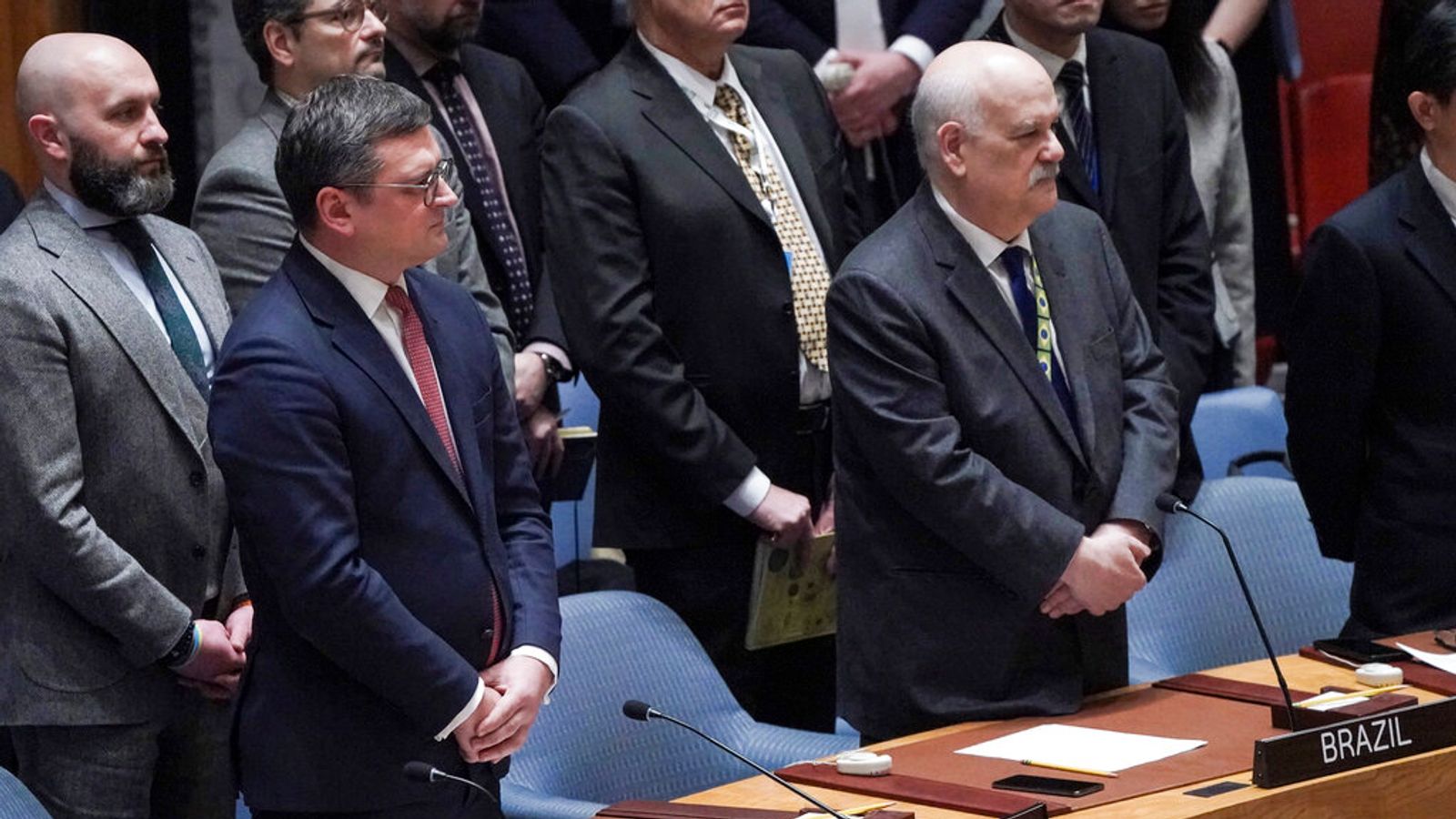Lisbon funicular crash claims 16 lives – all we know as foreign nationals confirmed among fatalities

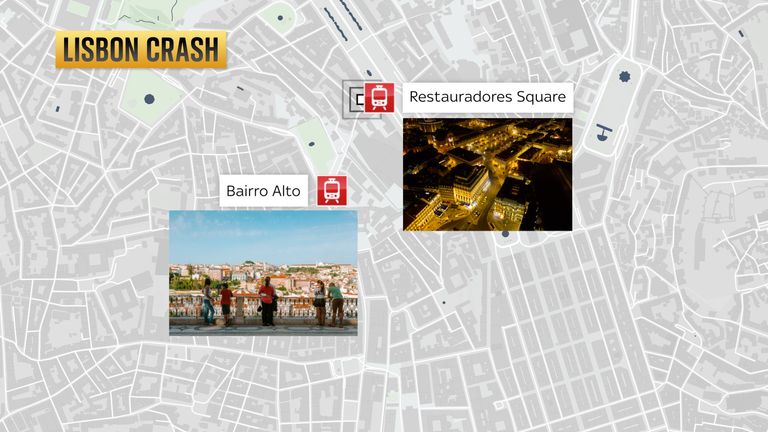
Portuguese authorities have declared three days of mourning after Lisbon’s iconic Gloria funicular crashed, killing 16 people and injuring 23.
One of the carriages on the railway derailed and crashed during evening rush hour on Wednesday.
Emergency services arrived at the scene within minutes to rescue people from the wreckage. Foreign tourists were among the injured and the dead.
Of the 16 fatalities, five were Portuguese, two Korean and one Swiss. The identities of the other eight have not been made public yet.
Here is what we know so far.
What happened?
The Gloria funicular, a national monument hugely popular with tourists, was operating as usual between Restauradores Square in downtown Lisbon and the Bairro Alto neighbourhood on Wednesday evening.
The journey is just 265m (870ft) and takes three minutes but operates up a steep hill, with two carriages travelling in opposite directions.
At around 6pm, the top car reportedly hurtled down the hill before leaving the tracks and crashing into a building 30m (98ft) from the bottom of the line.
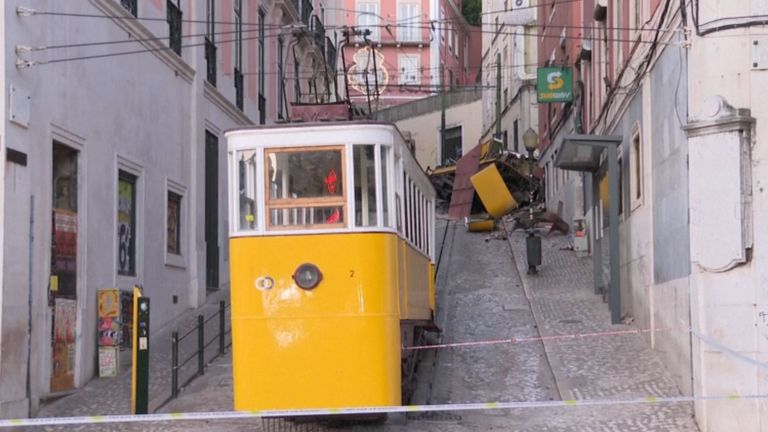
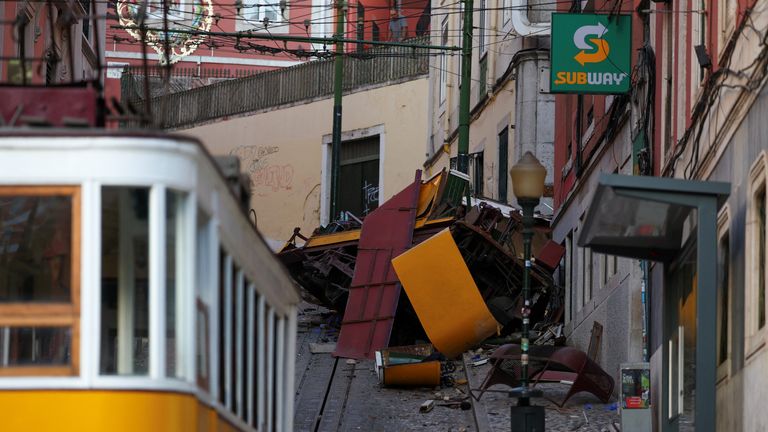
According to the people who were in the bottom carriage, a few metres into their ascent, it started going backwards. When they saw the other car speeding towards them, they jumped through the windows to escape.
Swiss tourist Rasha Abdul told Sky’s Europe correspondent Alistair Bunkall her husband escaped first, allowing her to pass their three-year-old son to him before she got out and the top car crashed just metres from them.
“We were afraid it would crash with us – the fact that it crashed there [on the corner] rescued us,” she said. “When I went out, everything was dusty and blurry.”
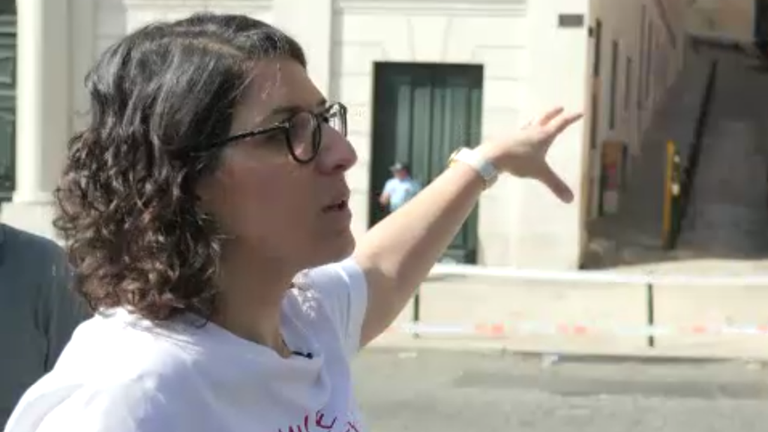
What caused it to derail?
It is not clear what caused the funicular to malfunction and derail. Portuguese Prime Minister Luis Montenegro said the public prosecutor’s office has opened an investigation.
The New York Times reported the Lisbon Firefighters Regiment saying it happened as a result of a “cable that came loose”. But officials have refused to be drawn on witness speculation that the funicular’s brakes were faulty.
The leader of the Fectrans union claims workers had expressed concerns about problems with the railway’s haulage cable tension that made braking difficult.
According to Carris, the company that operates it, appropriate scheduled maintenance had been carried out.
Engineer Dave Cooper told Sky News local investigators need to establish why the two carriages “parted company”.
“The very fact that you can see both cars in the same news shot tells you there’s something wrong because while one is at the bottom, the other should be at the top,” the chairman of the British Standards Committee for Cableways told presenter Gareth Barlow.
He said the two cars may have become detached because of a fault with the cables or the point they connect to the carriages.
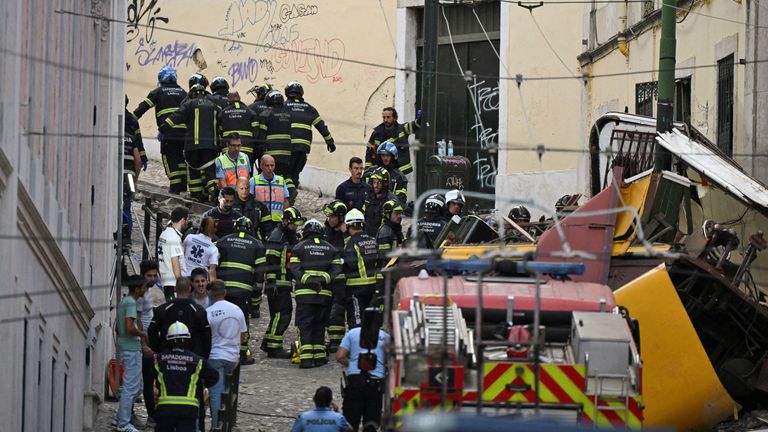
Describing what likely happened, he added: “That top car has lost suspension. Then what appears to have happened is it comes careering down the hill and goes quite a distance to get to where it’s got to.
“It comes to a bend and the rails want it to go around that bend but it careers away and strikes the building.”
The situation will have likely been made worse by the fact that the carriage was at full capacity – weighing up to 14 tonnes in total, Mr Cooper said.
Who are the victims?
On Thursday, Portugal’s civil protection authority said 16 people died in the crash and 23 were injured.
All of those killed were adults – eight women and seven men, it said. The details of a further victim who died of their injuries in hospital on Thursday morning have not been revealed.
Originally, 17 people were reported dead but this was revised down on Thursday afternoon after officials identified they had duplicated the case of the victim who died in hospital.
Only one of the dead has been named so far – Andre Marques – a brakeman who transport workers’ union SITRA said died on Wednesday as a result of the crash.
Five of the fatalities were Portuguese, two Korean and one Swiss. The identities of the other eight have not been made public yet.
Local media is reporting that four of those killed worked for Portugal’s biggest charity Misericordia de Lisboa Santa Casa, whose officers are near the funicular.
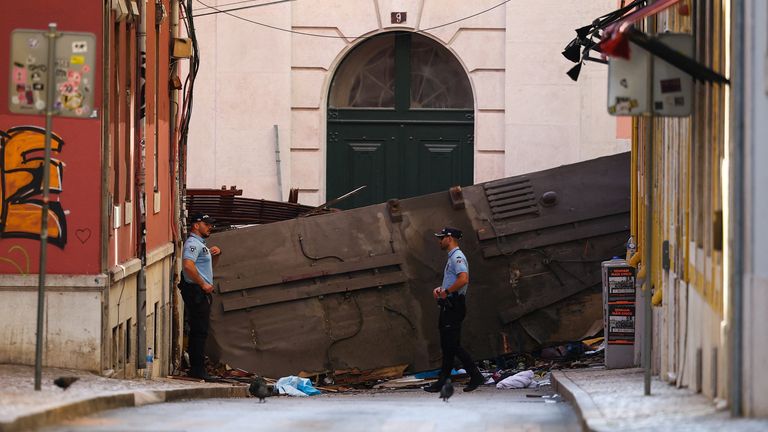
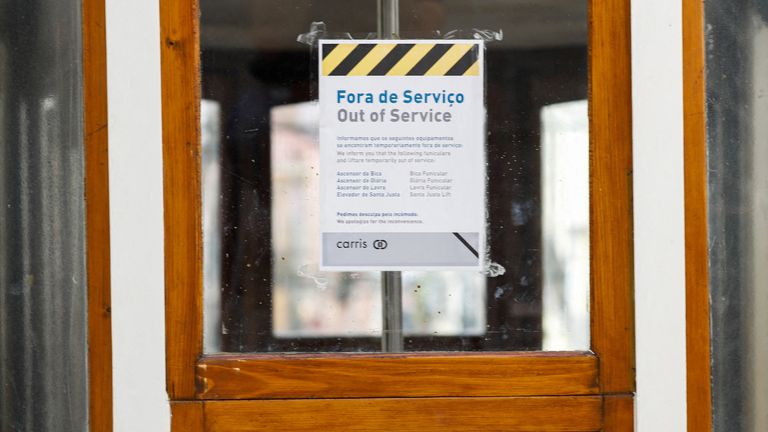
Read more from Sky News
Putin and Xi caught talking about organ transplants
France’s government is on the brink of collapse
Who is Kim Jong Un’s sister?
Those injured include 12 women and seven men between the ages of 25 and 65 and a three-year-old child, the Civil Protection authority said.
The nationalities of 15 of the injured have been revealed and include three people from Portugal, two from Germany, one from Spain, one from South Korea, one from Cape Verde, one from Canada, one from Italy, one from France, one from Switzerland, and one from Morocco.
According to CNN Portugal, the two from Germany were the three-year-old boy and his mother, who were both pulled from the wreckage.
The UK’s Foreign, Commonwealth and Development Office said it is “aware of the incident” and “in touch with the local authorities”.
“We stand by to provide consular assistance if there are any affected British nationals,” a spokesperson said in a statement.
The funicular opened in 1885 as the second of its kind in the city.
It was electrified in 1915 after having originally been powered by water counterweight.
The Gloria, like the two other funiculars in Lisbon, was designed by the Portuguese engineer Raoul Mesnier de Ponsard.
It is the best-known and most popular funicular in the city and is said to transport around three million people a year.
The funicular connects downtown’s Restauradores Square to the neighbourhood of Bairro Alto at the top of a hill in just three minutes.
It departs every 12 minutes from both sides, starting at 7:15am. The last departure is at 11:55pm.
The view from Bairro Alto is said by many to be the best in Lisbon.
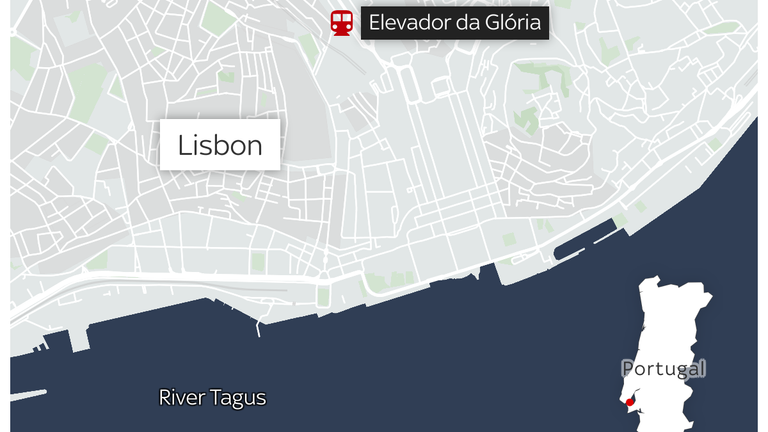
What have officials said so far?
Lisbon’s mayor, Mr Moedas, declared three days of mourning in the city, with Thursday also declared a day of national grief.
Speaking at a news conference on Thursday, he said Lisbon “needs answers” and that people expect “accountability and responsibility”.
He said all funiculars in the city will remain closed until an investigation concludes.
Portugal’s Prime Minister Luis Montenegro paid tribute to the victims. “Today is a day of pain. No words are sufficient to heal your loss and to fill the void that has been left behind by those who have departed,” he said.
The country’s Institute of Forensic Medicine is working “swiftly” on autopsies so that the bodies of the victims can be returned to their families, Mr Montenegro added.
He said that Portuguese authorities are in touch with the families of foreign nationals killed.
The Pope sent his “heartfelt condolences” and “spiritual closeness” to those impacted by the crash, while UK Prime Minister Sir Keir Starmer said his thoughts were with the victims and their families.
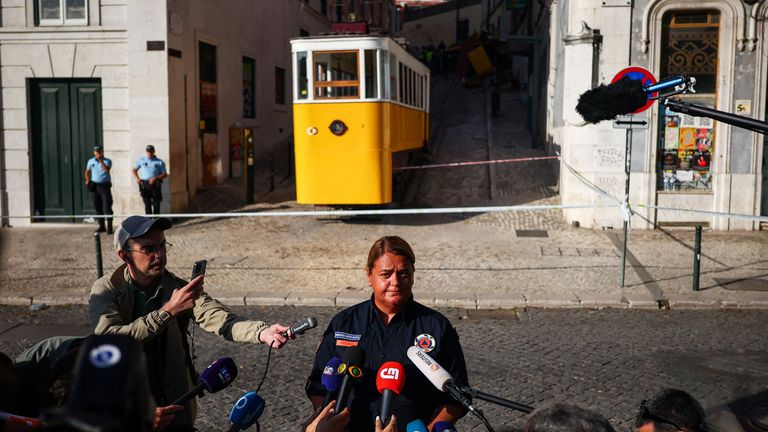
Ukrainian President Volodymyr Zelenskyy also said he was “deeply saddened” by the incident, and United Nations director-general Antonio Guterres said his “full solidarity” was with the people of Lisbon.
President of the EU Commission Ursula von der Leyen posted on X: “It is with sadness that I learned of the derailment of the famous ‘Elevador da Gloria’. My condolences to the families of the victims.”
Portugal’s defence minister Nuno Melo said: “The accident in Lisbon with the Gloria elevator was a tragedy that caused strong commotion and consternation in Portugal and in the world… I express all my solidarity and offer heartfelt condolences to the families of the victims, wishing a speedy recovery to the injured.”
